Representation of Buddha in Maravijaya position
Tibet
13th-14th century
Representation of Sakyamuni Buddha, or perhaps Akshobya (the position of the thumb of the left hand could indicate that this is the Buddha of the East). Represented seated, legs crossed in lotus position (vajraparyanka) on a base with a double row of inverted lotus petals, the upper part decorated with gadroons. The right hand is placed on the knee in the bumisparsha mudra position (taking the Earth as witness) with the fingers pointed towards the ground and the left hand placed in its lap, palm facing the sky. The awakened person is dressed in the uttarasangha placed on the body, the right shoulder and a large part of the chest exposed, a section of the fabric placed on the left shoulder falling in the middle of the arm, the latter ending in fine folds resting on the ground. Cold applied gilding covers the face and neck of the Blessed One. The half-closed eyes enhanced with colored pigments frame an aquiline nose, the latter above a small mouth with thin lips sketching a slight pursed smile. The eyebrows with a pronounced curvature on each side of the urna, the hair painted blue, attesting to the peaceful nature of the Buddha, is covered with small spikes. The skull topped with the usnisa (excrescence) completed with a stylized lotus bud, the earlobes distended by the weight of the ornaments that the Awakened One once wore in his worldly life.
The wax-sealed copper plate features a discreet double vajra.
Bronze with brown patina, pigment highlights
12.8 x 10.1 cm
720 g
Surface wear, filling, old restorations to the back of the subject (especially at the base),
Sealing plate added later
Former European private collection
Contact us: culturesetcivilisations@orange.fr





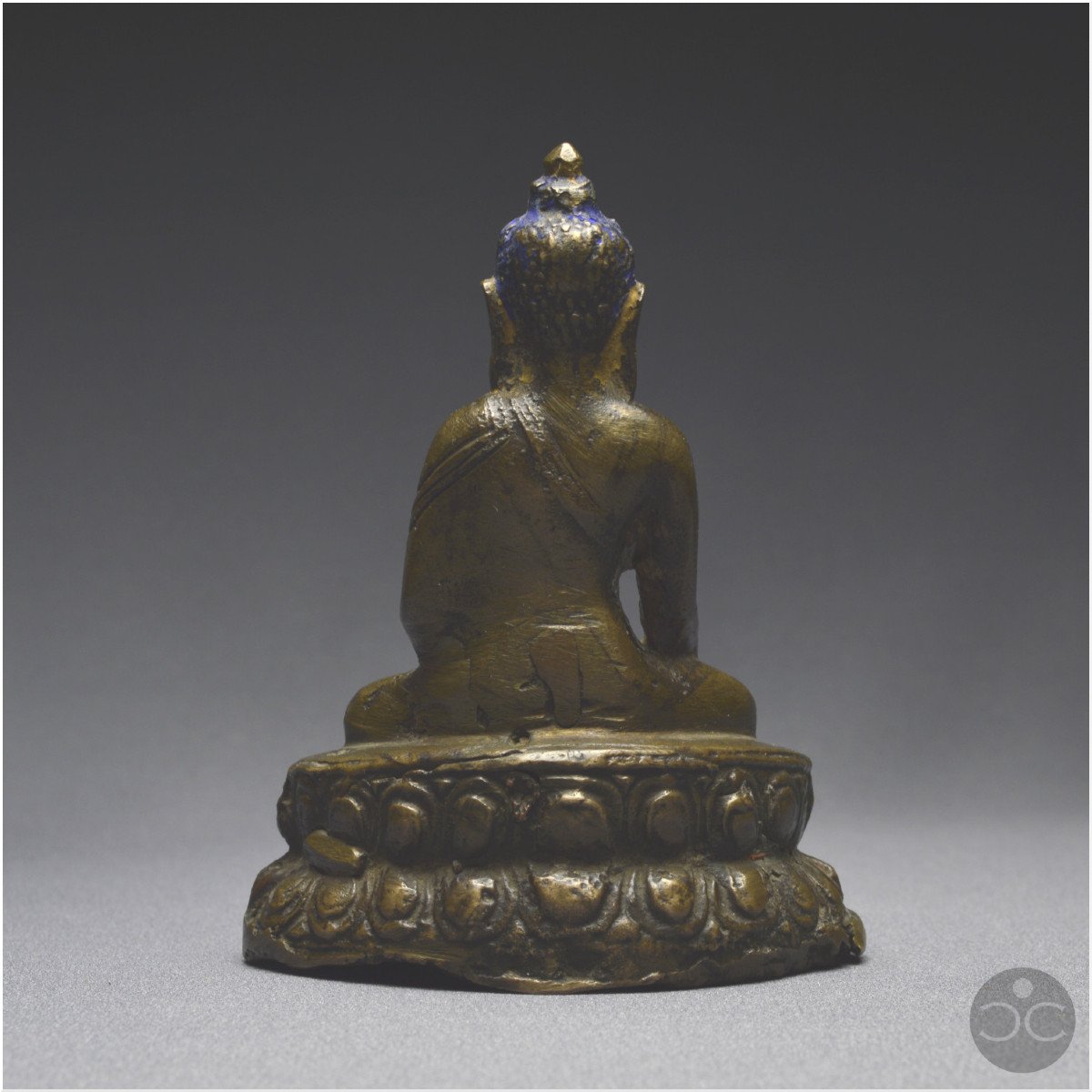






















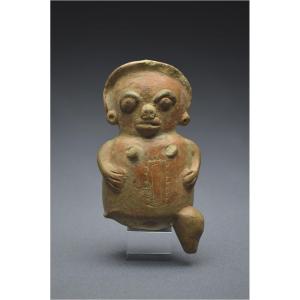
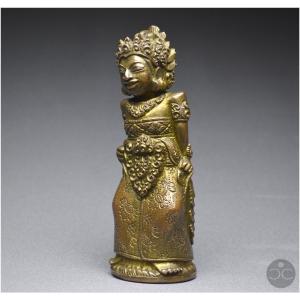

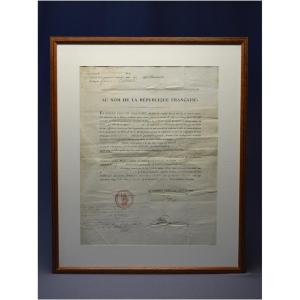

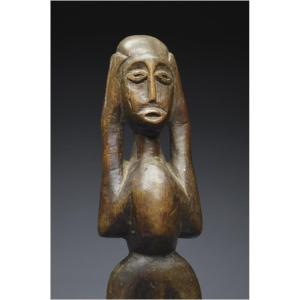
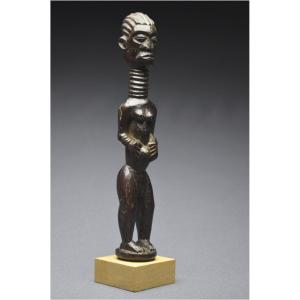


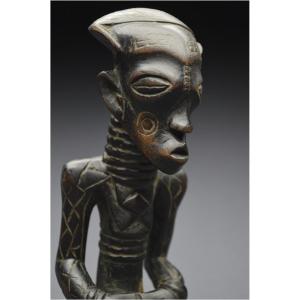
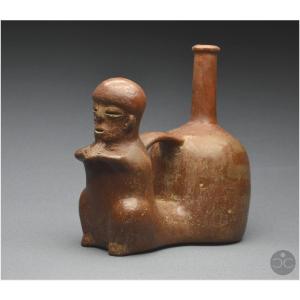
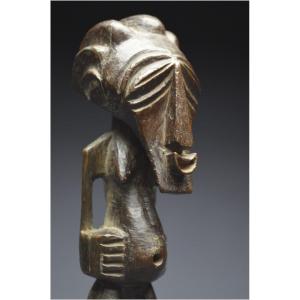

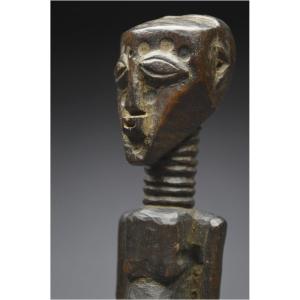


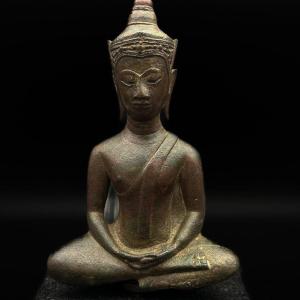





 Le Magazine de PROANTIC
Le Magazine de PROANTIC TRÉSORS Magazine
TRÉSORS Magazine Rivista Artiquariato
Rivista Artiquariato